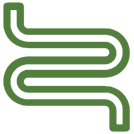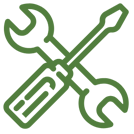 Inspection, Testing & Maintenance
Inspection, Testing & Maintenance
Get Verified Results for your Medical Gas system.
 VacWash
VacWash
Clean your medical vacuum system to provide optimal pressure.
 Environmental Monitoring
Environmental Monitoring
Maintain the health of your employees in your facility.
 Installation
Installation
Ensure patient safety, reduce risk, and increase your profitability.

 Here’s how the program works. When a new piece of equipment or outlet is installed, someone bar-codes and enters it into the program, specifying the type of equipment and location. The manufacturer’s information is also entered, including brand, type, and recommendations. Best practices and requirements for equipment are also entered, including standards and regulatory maintenance, testing, and inspection requirements. Any breakdowns or repairs, including issues with contamination, low or no flow, or equipment failures, are then tracked. Third-party verifications are electronically attached to the asset as well.
Here’s how the program works. When a new piece of equipment or outlet is installed, someone bar-codes and enters it into the program, specifying the type of equipment and location. The manufacturer’s information is also entered, including brand, type, and recommendations. Best practices and requirements for equipment are also entered, including standards and regulatory maintenance, testing, and inspection requirements. Any breakdowns or repairs, including issues with contamination, low or no flow, or equipment failures, are then tracked. Third-party verifications are electronically attached to the asset as well.
